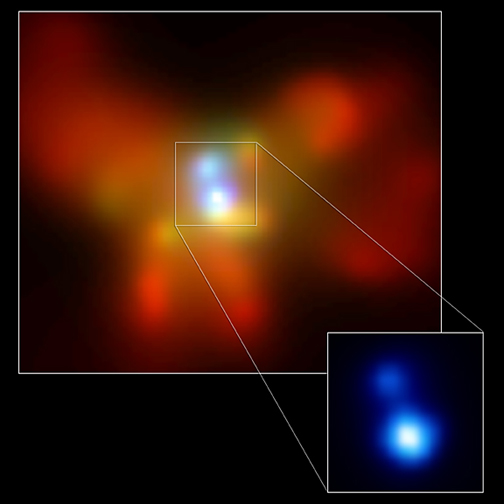

|

|
|
||||
|
NGC 6240: An extremely luminous galaxy
about 400 million light years from Earth. Caption: The peculiar butterfly shape of NGC 6240 was caused by the collision of two smaller galaxies. Chandra's high-resolution image of the galaxy's central region (inset) revealed not one, but two active giant black holes. Over the course of the next few hundred million years, the two supermassive black holes, which are about 3000 light years apart, will drift toward one another and merge to form one larger supermassive black hole. The relatively recent merger (30 million years) that formed this galaxy triggered a dramatic increase in the rate of star formation and supernova explosions. Heat generated by this activity created the extensive multimillion degree Celsius gas seen in this image. The red, green, and blue colors represent low, medium and high X-ray energies, respectively. Scale: Full field is .35 x .3 arcmin; inset is 4 arcsec per side Chandra X-ray Observatory ACIS Image
CXC operated for
NASA by the Smithsonian Astrophysical
Observatory
|
|
|